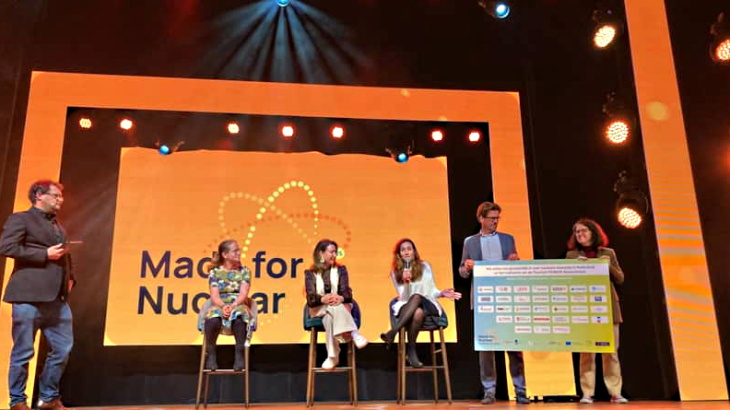Rafael Mariano Grossi, the IAEA director general, met with Hiroshi Kajiyama, the Japanese Minister of Economy, Trade and Industry yesterday. Kajiyama officially invited the IAEA to make its first visit in this area of cooperation, which Grossi said was "an important step in our preparations."
"Japan's invitation for the Agency to make its first visit on the ground at this early stage, especially during the ongoing pandemic, shows their willingness to conduct the entire operation in a safe and transparent manner," said Grossi.
At the Fukushima Daiichi site, contaminated water is treated by the Advanced Liquid Processing System (ALPS), which removes most of the radioactive contamination, with the exception of tritium. This treated water is currently stored in tanks on-site. The total tank storage capacity amounts to about 1.37 million cubic metres and all the tanks are expected to be full around the summer of 2022.
According to Japan's announced policy, the tritium will be diluted to 1500 becquerels per litre, which is one-fortieth of the concentration permitted under Japanese safety standards and one-seventh of the World Health Organisation's guideline for drinking water.
In fact, the total annual amount of tritium to be discharged will be below the operational target value for the Fukushima Daiichi plant before the accident, which was 22 trillion becquerels per year. Figures from the US Nuclear Regulatory Commission (NRC) show that this level is also typical of US nuclear power plants during normal operation. "Tritium is one of the least dangerous radionuclides because it emits very weak radiation and leaves the body relatively quickly," the NRC notes in a public document on routine radioactive releases.
Nevertheless, the high profile of the accident-struck Fukushima Daiichi site and the loss of trust surrounding its operation have made the release a highly contentious issue among local people and led to its politicisation abroad.
Grossi said: "These on-site meetings and activities will help build confidence that the discharge takes place in line with the international safety standards which aim to protect people and the environment.”
The first IAEA visit on the matter, now slated for September, will follow a scope of work agreed in July. At that time, the IAEA said that its "involvement before, during and after the water disposal will provide confidence - in Japan and beyond - that it takes place in line with the international safety standards which aim to protect people and the environment."
"As the eyes of the international community," said Grossi, "IAEA experts will be able to verify that the water discharge is conducted safely. This is of paramount importance to reassure people in Japan and elsewhere in the world, especially in neighbouring countries, that the water poses no threat to them."
The IAEA and Japan also agreed to cooperative work on human resources and the dissemination of information on nuclear energy.

.jpg)



_16403_79272.jpg)


_69218.jpg)

_76087_55556.jpg)



